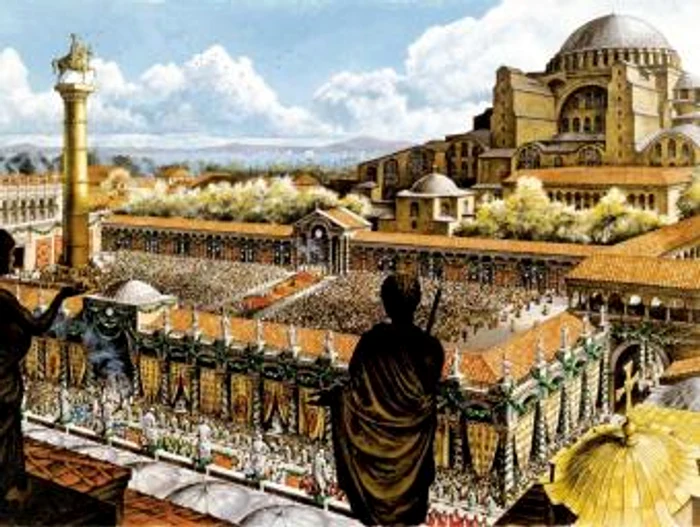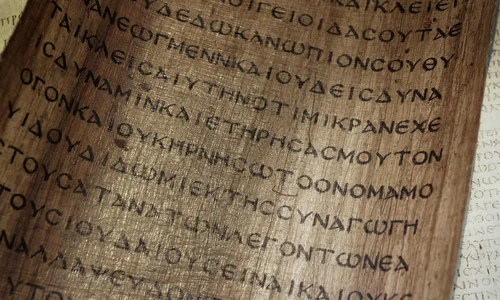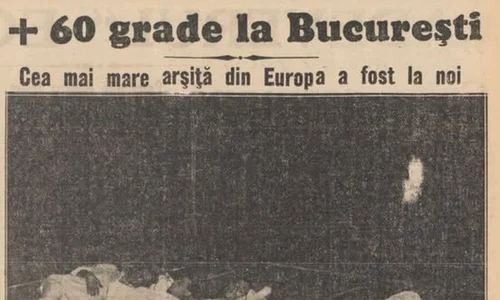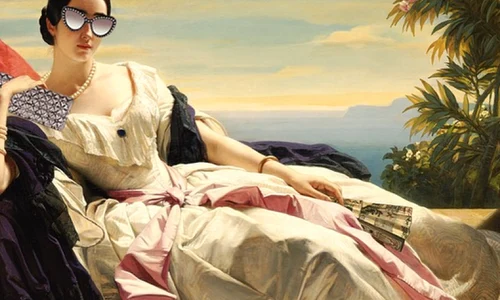
The Byzantine Empire, the Foundations of a Divine Monarchy
The history of the Byzantines is synonymous with an evolution filled with dynamic and various mutations, ranging from the socio-economic structures to the political and ideological ones. Byzantium represents much more than an extension of the Late Roman Empire, offering us an original picture of a powerfully centralized state, benefiting from a well developed monetary system and a high level of urbanization which to a certain extent blocks feudalism. But what are the principles behind such a development? What sort of political ideology cements its structures? And how is it put into practice?
The Byzantine political dogma is the result of an evolution that comprises into a very synthetic mixture several Oriental, Greek and Roman political ideas. Stoic thinking, Neoplatonic systems and not the least Christian theology that absorbs the essence of pagan thought under a new form, all come together to create a strong imperial theology. Eusebius of Caesarea and the fathers of the Eastern Church concoct a doctrine meant to legitimize the order put forward by the state. That is, the empire is itself a product of divine will and it has a mission:to submit the whole world under the scepter of Christian faith. Pax romana, which referred to maintaining order and peace under the Roman flag, now becomes pax Christiana, the installment of Christian order, a principle that will turn into a genuine milestone within the process of political centralization and outward expansion.
On a strictly ideological level, the Byzantine Empire is nothing more than a terrestrial replica of the divine empire, so it is unique and universal, in the image of the Christian God. Monarchy and monotheism go hand in hand, which enables Christian thinkers to speak of the divine unity mirrored in the existence of the Byzantine state. Byzantium will preserve nonetheless the designation of the state it replaced, that is imperium romanum/ basileia ton Rhomaion, or just Romania, although its structural basis and functioning are considerably divorced from those governing the old roman state. But the idea of a continuous political entity will prevail in theory. At a theoretical level, we are still talking about the same Roman Empire, the universal and eternal one, but within another shell.
Like the empire, the imperial power is in its turn considered to be of divine origins. As such, the person in charge of this amount of power has superior roots, he is the chosen one, above every other human being and equal to the apostles. The emperor possesses, on an ideological level, the universal and absolute power, he is the supreme judge and commander of the army, the sole legislator and the ultimate defender of the Church. However, in practice things appear to be slightly different, due to the limitative factors of the monarch’s absolute power. We are referring here to the constitutional political factors, the Senate, the people, the army, but also the Church, laws and traditions. To this we may add the actual relationships between all these forces at a certain moment.

Nevertheless, as the empire tend to become more and more separate from the traditions of Augustus’ principate, the emperor takes steps to increase his influence by means of his own factors:the court, bureaucracy and ideology, the latter strengthened by an important political capital inherited from Rome and the veil of Christian theology.
In this primary stage of evolution in Byzantium, the roman idea of the people’s sovereignty can be applied to a great extent through the activity of the Senate and the organization based of the demes. The Senate of Constantinople, also filled up with representatives of the land aristocracy and high ranking dignitaries from the East, is but a mere shadow of the old Roman Senate. It is reduced to a consultative function, primarily in legislative and judiciary matters, but during the throne vacancy it is the one that rules.
The population of Constantinople, the imperial people, is the one who demands the emperor to justify his policies. The Hippodrome becomes the scene of a very active political life, where we find the demes, which were at the beginning chariot racing factions. The factions will evolve in the course of the 4-6thcenturies into political and social groups. There were two notable groups, the Blues and the Greens, well differentiated only at the higher level:the former were led by the Orthodox senatorial aristocracy, whereas the latter was dominated by rich merchants or workshops owners. Both use the urban plebs as a maneuver group.
The most important part played by the constitutional factors was electing the emperor. The new leader is God’s chosen one, but his will is expressed through the unanimous vote of the Senate, army and people. In practice, it was the concrete relationship between these forced that determined which candidate was the chosen one. After the proposal, the chosen one was raised on a shield, approved by the Senate and acclaimed by the people. The shield rite, of Germanic origin, suggested the vital contribution of the army to the general decision. The Senate and the people need only accept by ovation.
But in the 5-6th century the significance of the two acts by which the emperor was enthroned tends to reverse, the scene of election moving from the military camp to Constantinople. The Church also interferes, constantly growing in its influence. In 457 the patriarch will crown the emperor, an event that legitimizes even more the imperial person by focusing on his divine character. This innovation will gradually become the main act of election, preceded since 491 by a confession of the emperor who promises to defend the Church.

If we cast a glance at the evolution of the imperial administration, we might notice even more clearly the transformation of the Roman empire into the Byzantine empire, performed through slow mutations rather than radical changes. To put it briefly, Augustus’ principate will turn into a divine Oriental monarchy, a process during which the steps taken by Diocletian prove to be crucial. Respublica romana will be heading toward a centralized structure synonymous with a bureaucracy no longer containing elected magistrates, but named officials. In fact, the imperial authority to which these officials are subordinated is itself no longer a magistracy, but a typical oriental despotic power. The public relationships between the Roman princepsand the magistrates are replaced by the more private connections between the dominusand the officials. The Roman citizen is no loner a member of a free community, but a mere subject (doulos).
The emperor relies on plenty of offices, the most important one occupied by the magister officiorum, the main administrator in the early Byzantine empire. He would supervise the palatine secretariat, the messengers and controllers of imperial administration, the palace guard, the imperial arsenals, also taking control over the coordination of foreign affairs. The chief of the chancellery (quaestor sacri palati) also enjoyed a considerable influence, as well as the financial administrators (comes sacrarum largitionum, comes rerum privatarum) or the one responsible with the palace (praepositus sacri cubiculi). As a matter of organization, Diocletian and Constantine made important changes consequent to the enacted reforms:no more distinctions between senatorial and imperial provinces, the creation of four prefectures and 14 dioceses, all fixed on a hierarchical and centralized frame.
The army is prone to changes as well. The Pretorian prefects are deposed of their military attributes, but they still benefit from an infinite civil power within their territory;the old limes system is abandoned and the heavy cavalry becomes the ultimate weapon. The army will concentrate behind the walls of fortified cities. Ever since Diocletian it will be divided into the frontier units and the mobile ones (exercitus comitatensis), also comprising the guards from Constantinople.
All these aforementioned structures will be subjected to changes according to circumstances. Facing the Arabian danger, in the 7thcentury Byzantium will focus on a more realistic, defensive political way of thinking, animating the people by means of values such as ‘homeland’ and ‘Orthodoxy’. Beginning with Justinian and Marcian the pyramid of the officials will be abandoned and all the administrators will be directly subjected to the emperor. The tasks of the magister officiorum will be divided between two persons. Such measures were intended to decentralize the administration.
Regarding finances, there are even more radical transformations, because a central treasury is founded (genikon) and the old taxation system of iugatio-capitatio(the double criterion:the land required for subsistence+the individual working capacity) is no longer available. A new direct land tax is imposed, collected only from land-owners (synone), but everyone pays the capitation tax. On an administrative level, the new provincial organization has at its core the thema, initially designating the military unit stationed in a province. The civil and military power unite in the hands of one person, the strategist, who can mobilize all the resources of the region in case of major danger. The fundament of these cells was the strong free peasantry, who offered soldiers. Apparently this organization starts to develop from the reign of emperor Heraclius, around 623.
The army is, as suggested, subjected to change as well. The old mercenary troops are replaced by rural militia, therefore we now have a popular army. In order to provide a degree of stability, dynasties such as the Heraclids or Isaurians create the stratiotic goods, hereditary parcels of land the peasants worked on so as to gain an annual income and be able to buy his military equipment.
We notice then a constant evolution of the structures in the eastern half of the Roman empire, which actually becomes a totally new state, a result of both economic and social circumstances, and military and religious matters that Constantinople has to tackle. On an ideological level, Byzantium appears to be a strong monarchy of divine origin.
Recommendation:
Hussey, J. M., The Cambridge Medieval History. Vol. IV:The Byzantine Empire, Cambridge University Press, 1966.















